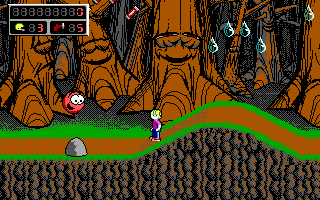I’ve been reading “Masters of Doom: How Two Guys Created an Empire and Transformed Pop Culture” by David Kushner after a recommendation from Jeff Atwood.
This is the first e-book I read on a tablet (iPad to be specific) and I have to say
I’m hooked, both for the experience of reading on the tablet, and for the book itself.
As an engineer, it was hard for me to accept using a tablet. All my tools naturally run on a laptop or desktop. Schematic design, layout, compilers, etc. After all these years I broke down, got a tablet and now I see what all the fuss was about. Of course I had worked in some form or fashion in the same group that worked on parts of the original Amazon Kindle tablet and a few others tablets. I knew what Steve Jobs was talking about but I didn’t realize it would great it can be to hold a thin device that you can use to read any book. I was worried about the battery life. After designing a few devices with LCDs while keeping low power I was a bit paranoid, but the iPad stayed true and kept going for hours.
Enough of praising the tablet. I said I was hooked on the book and honestly I think any entrepreneur should read it. But it doesn’t have anything to do with me you say? Nonsense. The lessons of the book carry over any enterprise.First lets start by stating these are the guys the worked on so many of the most popular games in the 90’s.
I fondly remember logging into the BBS and getting Commander Keen, playing it for hours. Its amazing now, after all these years to read about the guys behind it. As a kid, you always imagine that these games were built by a mega corporation with all kind of stuff. I remember the Apogee logo. I remember it represented fun, and the guys working on the games had lot of fun working on them.
John Carmack and John Romero are, as the book describes, masters. But they’re not just masters of doom. They’re masters of their craft and business. Why did they succeed where others failed? I chalk it up to several factors which are key
in almost any business.
The first is their ability to create games that pushed the envelope of the technology at the time. They were to games what Apple is to tablets. John Carmack was a master of coding and graphics. He was able to push the limits of every system he worked on,
developing techniques that were non-existant. These techniques allows the two Johns to provide realism and better playing that players were carving. There are plenty of companies that improve something.However, the technical improvements channeled directly to results that gamers could see and feel, and this makes all the difference. Better performance and better graphics made gamers feel as part of the game. So, technical improvements channeled directly into differentiating the product.
Both Johns had an obsession with playing creating games, and had done so for very long before starting id Software. This obsession enabled them to understand their target audience. They were gamers and they made the games they wanted to play. They were also programmers and understood what it would take to build them. I don’t think they ever sat down to do market research. They were the market, and When you know the market, you know what customers want. If you deliver it better than anyone, success is likely to follow.
One very important detail in the book is John Carmack’s refusal to patent his technological advances to improve performance and graphics. Sounds crazy right?
The techniques he developed were very valuable to him and would be to others. But, his hacker ethic didn’t allow him to claim as his the work inherited from others.
I find this is a good slap in the face to patent trolls everywhere and those who keep patenting rediculous things. Why? Quite simply because despite not patenting anything, the company succeeded tremedously due to their continuous innovation. They didn’t need the patents. They were obviously first to market with the techniques, but they kept innovating every game. That was the key. Plenty of companies are granted patents for trivial (and very obvious) things, just trying to keep a fake legal edge on competitors and keeping the real innovation at bay.
They are missing the bigger picture. Innovate or die (as told in the book Ninja Innovation by Gary Shapiro) is really the only way to do it. But its hard and requires continuous improvement. A patent is no panacea for a company sitting on its behind while someone out there is finding a better way to do things.
A patent isn’t a magical charm. I am not against patents, but recent media stories show just how crazy the system has become.
On the other hand, John Romero was multifaceted, doing graphics and the level editors and other tools used to create the game. The ability of the two to naturally divide the tasks allowed each of them could excel at their own tasks and collaborate when necessary. They agreed on the larger picture and left the details to each other.
As Jeff Atwood mentions, the computer today is so powerful and the resources of information so plentiful, that it isn’t necessary to be like John Carmack and invent everything. But, you still have to innovate, someway, somehow.
